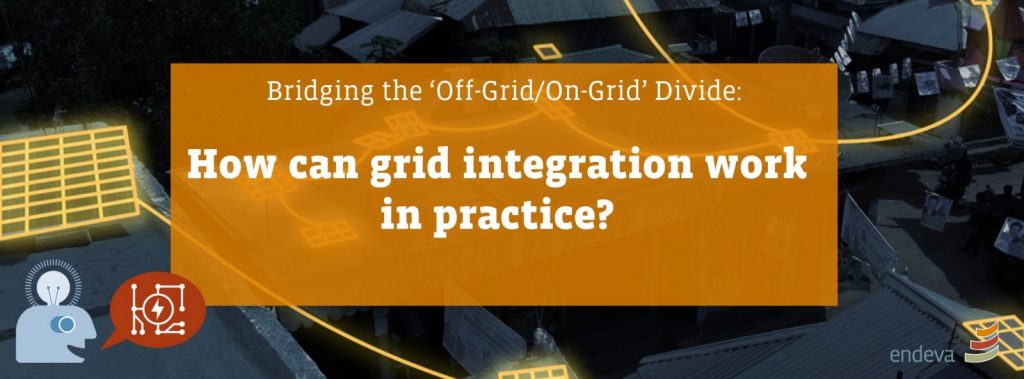Integrating decentralized, off-grid energy solutions with the national grids can have several key advantages for everyone involved. It can:
- Support governments to deliver on the Sustainable Development Goal 7 (Universal access to electricity by 2030) by giving more people access to energy and attracting future investments in the sector.
- Reduce electricity costs for low-income customers, especially in remote rural areas.
- Help national utilities to increase grid stability, save costs and reach more customers.
- Provide mini-grid operators with increased investment security and the ability to feed-in access electricity.
But why don’t we see this model implemented at a global scale? Why has this revolutionary idea not yet disrupted the energy market?
We believe that the main problem is centered around a business model uncertainty. While a technical solution that would allow a bi-directional exchange of electricity from direct current (DC) to alternating current (AC) and vice versa is possible, no one has cracked the code of a business model that works for all involved – the utility, the mini-grid operator and the customer.
That is why Endeva, together with the award-winning mini-grid operator SOLshare and other key players in the energy sector are working to address this issue. As part of this year’s ii2030 Initiative, we will design, test and implement the model of grid integration.
- Can you share any examples where grid integration has been tested in practice?
- What do you think are the key challenges that currently prevent grid integration from happening?
- What could a model look like that would make grid integration work in practice?
Join our online discussion on LinkedIn with #ii2030grid or click here!


